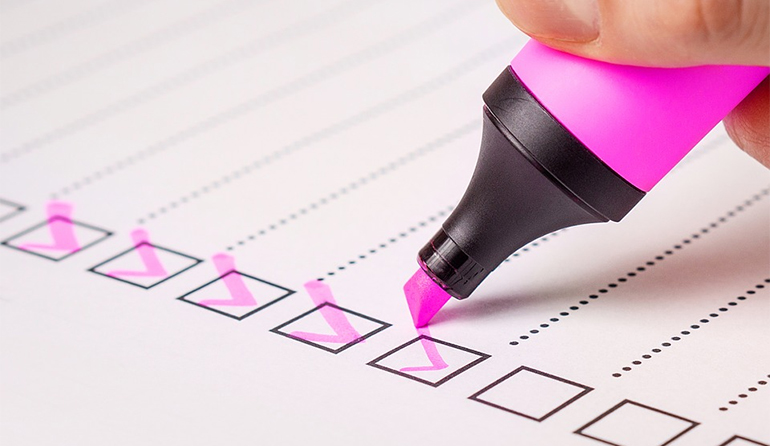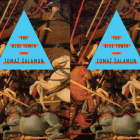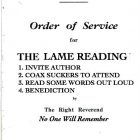(My) 10 Rules For APIA/Hapa Fiction: A Brief Ars Prosae Asianae

The Bechdel Test first appeared in Alison Bechdel’s “Dykes to Watch Out For” comic strip as a way of calling out the superficial character development of female characters who were always defined in relation to men. Among other things, it was a crucial and vital metric to help viewers/readers analyze and critique the embedded male gaze and the lack of female subjectivity, socialization, independence, and psychological and emotional depth in film and literature. The Bechdel Test has now become a crucial litmus test of gender, identity, and sexual diversity for virtually all creative work. APIA literature by nature is a robust, organically heterogeneous, polyvocal, and decentered literary archive that is as diverse as it is culturally, historically, and stylistically vibrant. Even better, a majority of foundational APIA texts have been written by APIA/hapa female writers. These important and defining characteristics of contemporary APIA literature are exactly some of the things that make it so amazing and also why there is so much at stake when writing, publishing, and assessing our own work.
At the same time, many book publishers have been following (pushing?) certain orientalist trends and also recycling Asian, hapa, and APIA clichés in their own catalogs that often belie the sheer boldness, contradiction, and multiplicity of APIA writing. APIA writers, scholars, cultural and literary critics, everyday readers, and journalists need to coin their own series of tests when spot-checking new work by APIA authors (or about APIA people) since they cannot possibly read every new work coming out of the Big Five and academic presses. Like the Bechdel Test, these ten rules are not intended to be the final word on any work by, from, or about Asian American literature, but rather, should be treated as the first critical lens that readers (can) use to call out and contest orientalism in publishing while also serving as a mandatory metric by which all readers (can) hold APIA writing accountable, as well as the presses that publish those works by and about us. The following test allows all of us to expect more of ourselves, of our readers, and of the publishing industry at large, but it is only a first step in a life of engaged reading.
The Bliss Test
- Characters and Writing Styles: does the APIA/hapa work in question create complex, nuanced, and/or unique APIA characters, writing styles, and/or storylines (that readers haven’t seen, read, and heard a million times)?
- Orientalism: does it avoid relying on food porn, APIA/hapa female beauty, cultural exoticism, and/or gendered cultural narratives to entice readers? Or, is the APIA narrative gendered in a particular way for a particular reason? For example, does the book cover reinforce an orientalist aesthetic (i.e., are there geishafied/Bollywood women on the cover? Does the book title make a totalizing cultural reference to an Asian country, an Asian food, an Asian martial art, or to an Asian flower?) Are female characters the “story tellers” and male characters merely the objects of narrative mediation? Is subjectivity granted only to female characters? Are female APIA characters objectified? Are the male characters mostly avuncular or militaristic?
- Clichés: does it consistently challenge and deconstruct APIA/hapa clichés? Or, does it reinforce these and other APIA tropes: the Dragon Lady, the Model Minority, the IT Expert, the Bad Female Driver, the Song-and-Dance Desi, the Broken English Speaker, the Sexually Emasculated and/or Socially Inept Male Character (often used as a contrast to white characters), the Permanent Foreigner, the East Asian Male Soldier, the Exclusive FOB/Boat People Narrative, the Math Genius, the Chess Prodigy, the Submissive APIA Female Character, the Tyrannical Father Figure, the Evil Mother-in-Law, the East Asians Are All Asians Fallacy, the Lost ABCD, the Chinese (or Japanese) Cultural Narrative as Synecdoche of Global Asian Culture, the Eternal Cuteness of Japanese People and Culture Fallacy, or the Professional Class of APIA Overachievers?
- FUBU: Is it written by an APIA/hapa writer? If not, let’s pause right there. Next question: if the answer is no, has the author practiced due diligence and not only done extensive research about the culture in question, but also created complex, nuanced, strong, unique, and/or diverse APIA characters? Has the non-APIA writer demonstrated an understanding of the cost of their own cultural mediation? Is the publisher making an effort to privilege APIA writers in its own press so they’re the dominant voices telling their own stories and shaping the public imagination in their own image, or is it—consciously or unconsciously—letting white people tell the APIA/hapa narrative for us?
- Does the APIA work in question cater to a white readership and/or focus almost exclusively on hackneyed narratives about samurai, emperors, secret martial arts (suddenly available to white novitiates), the Yakuza, the Cultural Revolution, the Vietnam War, Comfort Women, Asian prostitutes, and/or high-tech gadgets in Tokyo? If so, does it make an original contribution to the public discourse, public imagination, and/or literary or cultural archive? Does it violate any genre conventions, reader expectations, and/or cultural, historical, or racial clichés? Is the writing socially conscious at all?
- Does it show hapa and/or other racially mixed APIA characters? Or, is every APIA character racially homogeneous, culturally endogamous, and spatially sequestered within an Asian space? Are the hapa characters only Asian and white?
- Does it have non-straight characters? Or, is implicit heteronormativity the backlight of the work?
- Is its main premise that “it’s tough being caught between cultures?” Does the work have a more original thematic or premise? Please say yes.
- Does it display an unspoken worship of whiteness? Does the work measure or define itself—consciously or unconsciously—in relation to wealthy, white, professional, educated (male) elites? Does it demonstrate a complex understanding of race/racism and/or does it ride on the coat tails of honorary whiteness?
- Is its critical reception based on its literary merit or on the American appetite for APIA/orientalist/hapa/food porn/so-called “exotic” narratives? Is the writing horrendous, and if so, why is the author being given a pass? Does it follow the cultural stereotype of the aphoristic Asian writer (i.e., mandatory minimalism)? Does it have original turns of phrases, characters, plot lines, and/or stylistic and narrative modalities? Does it feel all-too-familiar? Has it been culturally commodified in any way and for what purpose? Lastly, are critics pulling their punches, and if so, why? What does the critical kid gloves tell us about the work itself, about the cultural narrative inside the work, about the state of literary criticism and its complicated relationship to non-white literature, and about the publishing industry in general?



